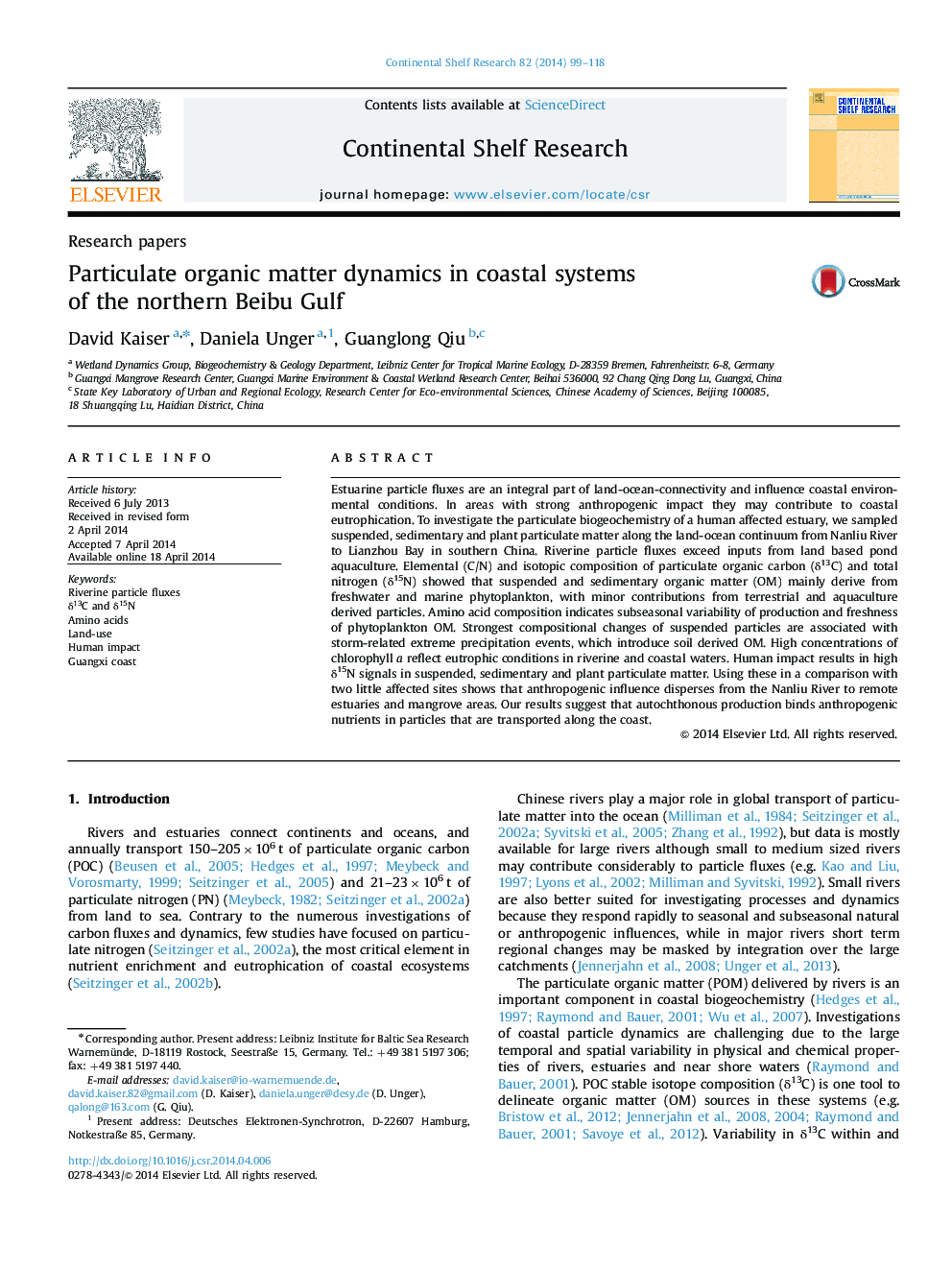| کد مقاله | کد نشریه | سال انتشار | مقاله انگلیسی | نسخه تمام متن |
|---|---|---|---|---|
| 4531920 | 1626130 | 2014 | 20 صفحه PDF | دانلود رایگان |
• Aquatic primary production utilizing anthropogenic nutrients is main source of POM.
• Seasonal discharge causes variable estuarine mixing of riverine and marine material.
• Extreme storm and precipitation alter particle composition and dynamics.
• Particulate δ15N shows the dispersal of anthropogenic nitrogen to remote sites.
Estuarine particle fluxes are an integral part of land-ocean-connectivity and influence coastal environmental conditions. In areas with strong anthropogenic impact they may contribute to coastal eutrophication. To investigate the particulate biogeochemistry of a human affected estuary, we sampled suspended, sedimentary and plant particulate matter along the land-ocean continuum from Nanliu River to Lianzhou Bay in southern China. Riverine particle fluxes exceed inputs from land based pond aquaculture. Elemental (C/N) and isotopic composition of particulate organic carbon (δ13C) and total nitrogen (δ15N) showed that suspended and sedimentary organic matter (OM) mainly derive from freshwater and marine phytoplankton, with minor contributions from terrestrial and aquaculture derived particles. Amino acid composition indicates subseasonal variability of production and freshness of phytoplankton OM. Strongest compositional changes of suspended particles are associated with storm-related extreme precipitation events, which introduce soil derived OM. High concentrations of chlorophyll a reflect eutrophic conditions in riverine and coastal waters. Human impact results in high δ15N signals in suspended, sedimentary and plant particulate matter. Using these in a comparison with two little affected sites shows that anthropogenic influence disperses from the Nanliu River to remote estuaries and mangrove areas. Our results suggest that autochthonous production binds anthropogenic nutrients in particles that are transported along the coast.
Journal: Continental Shelf Research - Volume 82, 1 July 2014, Pages 99–118
